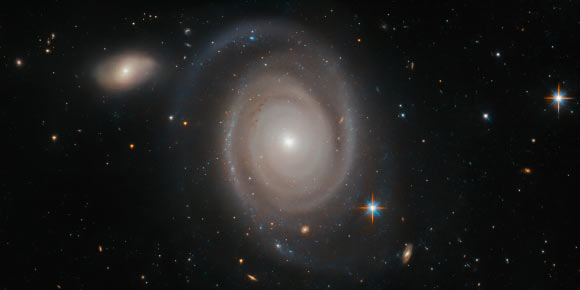Hubble Looks at Beautiful Spiral: NGC 1706 | Astronomy – Sci-News.com
The NASA/ESA Hubble Space Telescope has captured an amazing new photo of a face-on galaxy called NGC 1706.

This Hubble image shows the face-on spiral galaxy NGC 1706. The color image was made from separate exposures taken in the visible and infrared regions of the spectrum with Hubble’s Advanced Camera for Surveys (ACS). Two filters were used to sample various wavelengths. The color results from assigning different hues to each monochromatic image associated with an individual filter. Imager credit: NASA / ESA / Hubble / A. Bellini et al.
NGC 1706 is a spiral galaxy located approximately 227 million light-years from Earth.
Also referred to as ESO 85-7 and LEDA 16220, the galaxy is seen face-on toward the constellation of Dorado.
NGC 1706 was discovered on December 25, 1837 by the British astronomer John Herschel.
It belongs to the LDC357 group, a small gathering of galaxies which are gravitationally bound and hence relatively close to each other.
“Around half of the galaxies we know of in the Universe belong to some kind of group, making them incredibly common cosmic structures,” the Hubble astronomers said.
“Our home galaxy, the Milky Way, belongs to the Local Group, which also contains the Andromeda Galaxy, the Large and Small Magellanic Clouds, and the Triangulum Galaxy.”
“Groups are the smallest of galactic gatherings,” the researchers added.
“Others are clusters, which can comprise hundreds of thousands of galaxies bound loosely together by gravity, and subsequent superclusters, which bring together numerous clusters into a single entity.”





